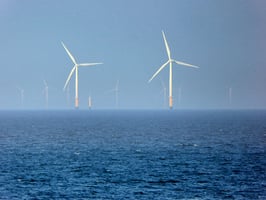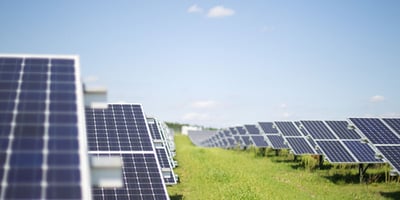The United States' offshore wind industry is undergoing an impressive transformation, marked by...
Enhancing Grid Reliability in Cold Weather: Challenges and Innovative Solutions
Extreme cold weather can pose significant challenges to the electrical grid's reliability. As we've seen in recent years, severe winter conditions can lead to power outages, impacting homes, businesses, and critical infrastructure. To address these challenges, the North American Electric Reliability Corp. (NERC) and the Federal Energy Regulatory Commission (FERC) have been working on strengthening cold weather generator requirements. However, proposed updates have faced obstacles, making it crucial to explore how technology can play a vital role in enhancing cold weather reliability in the power grid.
The Perils of Extreme Cold Weather on Power Generation
Before delving into technological solutions, it's essential to understand the specific challenges that extreme cold weather poses to power generators. Frozen instrumentation, fuel supply problems, and equipment failures are just some of the issues that can arise when temperatures plummet. These challenges lead to power outages and have far-reaching consequences, including economic losses and compromised public safety.
In 2014, during the infamous Polar Vortex event in the United States, power plants across the Midwest struggled to maintain operations due to extreme cold temperatures. Frozen sensors, meters, and control systems rendered critical equipment non-functional.
According to a Midcontinent Independent System Operator (MISO) report, during that polar vortex event, the region experienced a staggering 22% increase in energy consumption compared to typical winter demand. The extreme cold led to an unprecedented demand for electricity to heat homes, causing grid operators to call for rolling blackouts to prevent system-wide failures.
Fuel supply problems are another grim reality in extreme cold weather. The Texas power crisis in February 2021 serves as a poignant example. Record-low temperatures caused natural gas wells and pipelines to freeze, disrupting fuel supply to gas-fired power plants.
During this crisis, Texas experienced widespread power outages, leaving millions without electricity for days. The Electric Reliability Council of Texas (ERCOT) reported that more than 4.5 million customers were affected, with many facing sub-zero temperatures without heating.
Equipment failures during extreme cold weather conditions can be catastrophic. In Canada, where frigid winters are the norm, the consequences of equipment failures are well-documented. A Canadian Electricity Association (CEA) report revealed that cold weather contributed to numerous power outages in the country. These outages affected millions of Canadians and resulted in significant economic losses.
For instance, in the province of Quebec, a major power outage in January 1998 left approximately 1.4 million customers without electricity for extended periods. The CEA's report highlights that cold temperatures led to equipment failures, including insulator icing and transformer malfunctions, underscoring the vulnerability of power infrastructure in extreme cold climates.
Extreme cold weather presents significant challenges to power generation, but technology has emerged as a crucial ally in fortifying our infrastructure against its harsh effects. It offers innovative solutions that empower the power industry to overcome the limitations of freezing temperatures.
At the forefront of this battle are heat trace systems, meticulously designed to prevent the freezing of critical components within power generation equipment. By applying controlled heat to pipes, valves, and instruments, heat trace technology ensures the flawless operation of essential equipment in freezing conditions.
Modern power generation facilities have advanced instrumentation that remains resilient in extreme weather. These instruments provide accurate data and maintain control, even in sub-zero temperatures, preventing cold-induced malfunctions.
Technology's power extends to remote monitoring and control, allowing operators to oversee power generation assets from a safe distance. In the unforgiving landscape of extreme cold, remote monitoring enables real-time adjustments and issue resolution without exposing personnel to the elements, enhancing safety and responsiveness.
The integration of technology, particularly AI-driven remote monitoring and control, transforms cold weather reliability:
- Enhanced Safety: Remote assessment of power generation assets eliminates the risks of on-site inspections in harsh conditions, safeguarding human lives and preventing cold-related accidents.
- Real-time Adjustments: Remote monitoring offers immediate access to critical data, facilitating prompt adjustments to maintain the power grid's resilience in extreme cold. AI-driven systems enhance this capability by detecting anomalies and automating responses.
- Proactive Issue Resolution: AI analyzes vast datasets to identify anomalies, potential faults, or impending failures, allowing operators to take pre-emptive actions. This approach minimizes downtime and prolongs equipment lifespan.
- Data-Driven Decision-Making: AI processes historical weather data, current conditions, and predictive models to offer actionable insights. It predicts equipment freezing risks based on environmental conditions, enabling timely preventive measures.
Grid modernization, a cornerstone of our quest for enhanced cold weather reliability, involves a comprehensive overhaul of electrical infrastructure. This ambitious endeavor aims to fortify the entire grid, making it resilient and adaptive to extreme conditions. Smart grids, a prime example, can self-diagnose issues and autonomously reroute power, minimizing disruptions even in severe cold.
By leveraging technology and investing in grid modernization, we can ensure a reliable power supply in the face of extreme cold, safeguarding our infrastructure and the well-being of those it serves.
Investment in Technology for Grid Resilience
The implementation of these cutting-edge technological solutions undoubtedly entails a substantial investment. However, the dividends reaped from these investments far surpass the initial costs. The bedrock of this argument lies in the assurance of enhanced reliability. The repercussions are profound when the power grid remains operational during the most severe cold weather events. The impact on consumers, businesses, and critical services is significantly reduced, translating into long-term economic and societal benefits.
Regulatory Support and Industry Collaboration
The collaboration of regulatory bodies and industry stakeholders is paramount to driving the wheel of technological advancement in cold weather reliability. Regulatory entities like the Federal Energy Regulatory Commission (FERC) and organizations like the North American Electric Reliability Corp. (NERC) play pivotal roles. They must provide unwavering support and incentivize innovation through policies and directives. The collaborative synergy among industry stakeholders, technology providers, and research institutions is equally vital. Together, they forge a path towards developing and implementing practical solutions that fortify the power grid against the unforgiving trials of extreme cold weather.
In the nexus of technology, investment, and collaboration lies the key to securing the reliability of our power grid in the face of the harshest winter conditions. It is a journey fraught with challenges, but the destination is one where the lights stay on, businesses thrive, and communities remain resilient in the chill of extreme cold.
Conclusion
Extreme cold weather remains a challenge for power generators and grid operators. However, technology offers a path to enhanced reliability and resilience. Heat trace systems, advanced instrumentation, remote monitoring, and grid modernization are just a few examples of how technology can mitigate the risks of cold weather. Investment in these solutions, regulatory support, and industry collaboration can help ensure that the power grid remains reliable even in the harshest winter conditions. By leveraging technology, we can minimize the impact of extremely cold weather on our electrical infrastructure and maintain a reliable power source for all.


